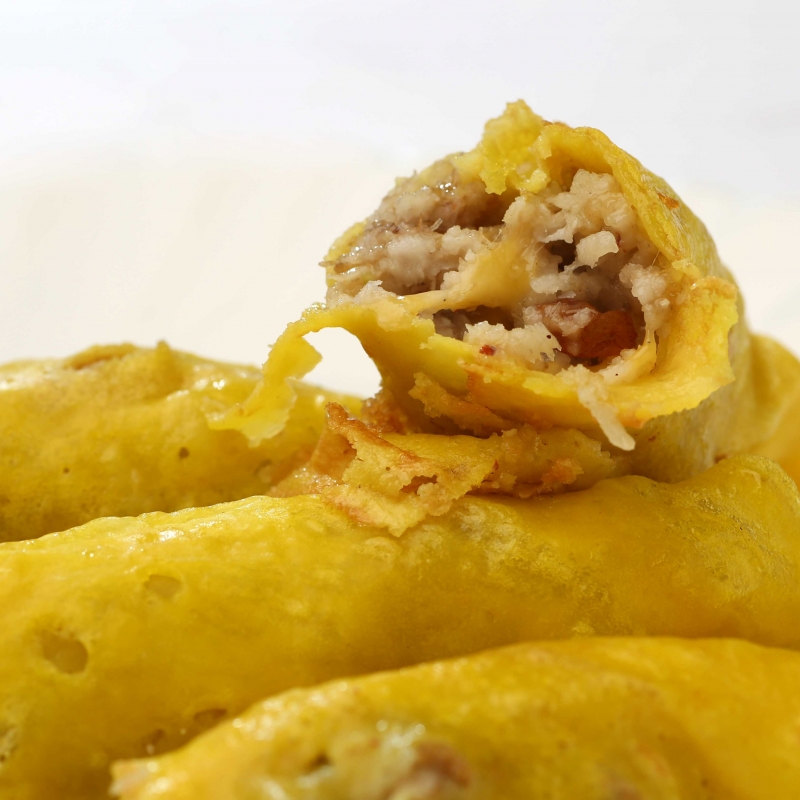Cuisine has an indisputable role in shaping the identity of a region. Food represents happiness, contentment and prosperity, apart from fulfilling its primary role of ensuring sustenance. The food habits of people are inseparably related to the socio-cultural and economic conditions of their region. The cuisine of a place evolves through time as does its language, rituals, practices and beliefs.
The Malabar region of Kerala, constituting the districts of Palakkad, Malappuram, Kozhikode, Kannur, Wayanad and Kasargode, has a rich variety of food that is unique to the region. Its culinary traditions were influenced and shaped by a number of factors—rural food practices, foreign influences that reached its shores through trade and invasions, and also internal and external migrations.
Malabar cuisine comprises the food that exists among its different religious and caste groups—the adivasis or tribal communities and other communities like the Gujarati, Tulu, Tamil, etc., who have settled here. Numerous food items have found their place on the dinner tables of Malabar in the last one hundred years. Biriyani is an excellent example. The Malabaris, or the people of Malabar, have indigenised biriyani by incorporating native ingredients so that it has developed its own distinct flavour, different from its counterparts in other culinary traditions within Kerala. Likewise, many of the food items that have come to Malabar have been indigenised—for example, alfam (roasted chicken) and kuzhimanthi (a type of biriyani).
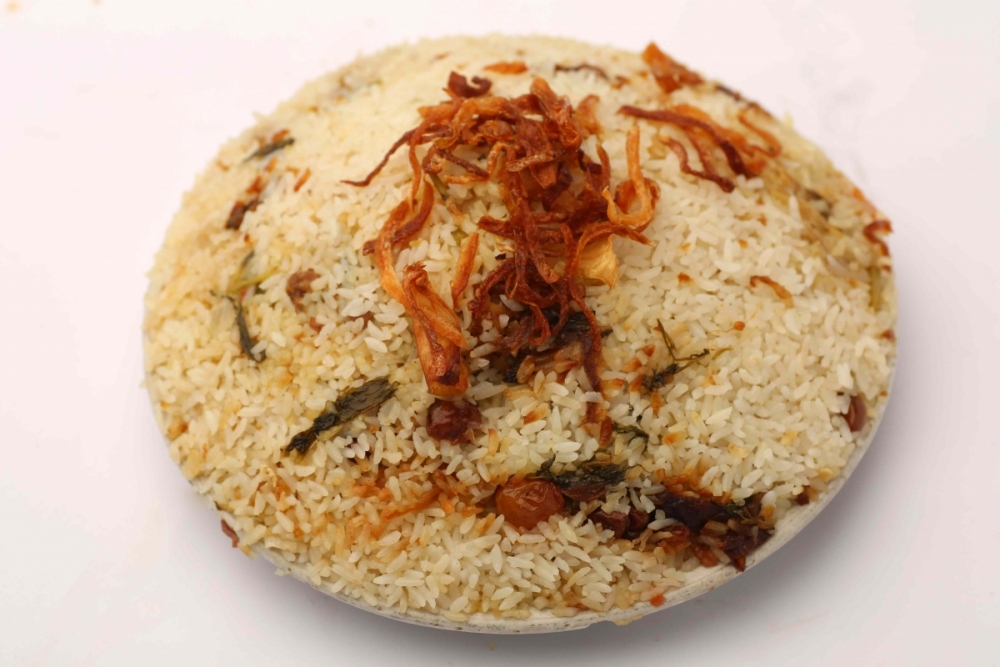
History of the Cuisine Culture of Malabar
From ancient times, the Malabar Coast had been a major trading centre in connection with the Middle East and other Arab countries. Blessed with unique riches—such as cardamom, cinnamon, ginger, turmeric and pepper—Kerala was the spice garden of the ancient world; for which traders from distant countries travelled great distances by sea.
In those days, spices were highly valued and were also considered sacred by the Arabs and the Europeans. During the time of the Hebrew prophet Moses, cinnamon was used as incense in Jewish religious rituals. Gradually, spices came to be associated with a luxurious way of living. While it was believed that spices would facilitate appetite and assist in digestion, they acquired their value because their delectable flavours liberated European cuisine from its bland tastes. The Romans were the first consumers of pepper from Kerala. Pepper is an ingredient in eighty-five percent of the recipes in the cookbook of Apicius, the fourth-century Roman gourmet. Egret and lapwing with pepper used to be the epitome of exquisite cuisine. If the guests could not be satisfied with these dishes, the women of Rome used to serve them wine with ginger or cool grape juice with cinnamon. The rich and the famous found many other uses for spices. They were used as cosmetics, perfumes, oils, aphrodisiacs and purifiers. Spices had to travel great distances from the Malabar Coast, in ships and caravans, to reach the ports of the Mediterranean, and from there to the markets of Europe. The Arabs benefitted the most from this exchange. It was the Arab sailors who acquired the spices. The valuable merchandise traversed through the Arab countries, changing hands many times. Its value kept increasing in the process, and the process continued for centuries. When the Arabs came here for trade, they stayed in different parts of north Kerala and established marriage relations with the locals of the region. Just as this interaction paved the way for a new language to evolve (Arabi Malayalam), its myriad effects were reflected in the food culture of the region as well.
Again, internal migrations also played a role in influencing the culinary history of Malabar. The Namboothiris, who came here around the eighth century CE, brought their own influences. The Christians, who came from central Kerala in large numbers between the 1930s and 1970s, also brought with them dishes and flavours hitherto unfamiliar to the region. Tapioca, meats such as pork (which was not popular in Malabar as it was not consumed by the Muslims), dishes like chicken stew and mutton stew are some of the items that reached Malabar through these internal migrations. Christian migration has had a major role in the popularisation of meat dishes—especially those made of mutton, beef and veal.
The Malabar culinary tradition was notable not just for its food but also for the way it was consumed. In Muslim joint families, the elders and children used to have food together. People would sit around the same plate and have food using their hands or spoons made of coconut shells. This practice, which must have come from the Arab traders who settled here, was prevalent until recently, and not just in households. It was commonly practised during the yearly commemoration festivals (aandunercha) of holy men and also at wedding feasts. Those who shared a plate need not even have been acquainted with each other.
Food Culture of Malabar and Local Knowledge
Food forms part of the cultural identity of the people. The traditional knowledge about native food, that suits the weather and individual body types, is of medicinal value, is invaluable. This treasure house of unique knowledge is passed down to generations in the forms of folklores, old sayings, riddles, etc.
The food practices that existed in Kerala before modern interventions began were based on the traditional understanding that food itself is medicinal. The consumption of food cooked with native ingredients, especially the plants in the backyard, was considered to be highly beneficial and had lifelong health benefits. The leaves of takara were a part of almost all curries. Plants such as oolanthakara, vattathakara, chembila (colocasia leaves), chenath (elephant-foot yam stems) and many whose names are not known were once used extensively in the kitchens of Kerala. Simple dishes made from these plants were good remedies for various diseases—Kuzhambu (a semi-solid dish) with chundakka and fried coconut, thoran (a solid dish) made of the male flower of the piyani plant, salted stem of the banana plant, puliyummulakum (tamarind and chilly curry), veppilakatti, which was common at a time in Brahmin households, made by adding just leaves and salt into narakam (Citrus plants), are some of the examples. Vallichoriyanam, which causes itching if touched, was fried and ground together with uncooked rice, mixed with sugar and was stored at homes. This was believed to be an excellent remedy for respiratory diseases. Velipparuthi leaves were mixed with coconut milk or cow’s milk, not just for its taste but also as a preventive for ulcer. Kozhukatta (rice balls) made from a wet mix of muriyotiipachila and raw rice was used to heal internal injuries. A paste made from the ground leaves of kilimaram used to be a medicine for chest pain. A curry made of muttapayal, apart from being a delectable dish, helped prevent piles. Most of the plants in the backyard that are now thrown out as weeds were once widely used in Malayali kitchens. Karayila, aanachevidi, tharav chediyila, theendanazhi, chembarathi, kappayila (the leaves of tapioca plant), payarila (leaves of string beans), mathanila (pumpkin leaves), kuppacheera, pachacheera, agasthyamuringayila—the list of plants that were used in cooking is endless. Earlier, the food habits were also intimately tied to seasons. In summers, dietary regulations were the easiest way to regulate body temperature. The scientific logic of preference for vegetarian food in summer and for meat during the rainy season was the same. In the Malayalam months of Midhunam (May-June) and Karkkidam (June-July), the ancestors used to insist on following specific diets.[1] Below is an acquired song about the diet followed by the poor households of Malabar over the course of a year.
For three months it is colocasia leaves and thakara (a type of leafy vegetable)
For three months it is jackfruit and mango
For three months it is elephant yam and koorka (Chinese potato)
For three months it is this and that.
(For three rainy months you can have leafy vegetables, for three summer months you can have fruits, such as jackfruit and mango, for the next three months you can have root vegetables, the next three months are shortage months, you have to scrape by, filling yourself with whatever you have.)
Jackfruit is a very common and popular fruit found in the yard of almost every house throughout Kerala. It was actually introduced by the Portuguese. Now it is consumed in various forms—as deep-fried snacks, as different dishes, or as a fruit itself. Mango is another such popular fruit. The word manga (mango) is apparently Malaysian.[2] In native cuisine, both mango and jackfruit have important and premium places in the diet of the lower economic classes.
Kanji, or rice gruel, is an important part of everyday food in Kerala, especially in Malabar. The dish is essentially consumed as boiled rice, along with the water in which it is boiled. It is lighter and kinder on the digestive system than plain boiled rice, making it a favourite food when one is under the weather.
Malayalis, especially the Malabaris, have different types of kanjis. The medicinal kanjis (marunnu kanji) that are consumed in the month of Karkidakam (June) are famous. Marunnu kanjiis are consumed to reduce the three elements (thridoshangal) in the body according to Ayurveda—vatam, pitham and kapham—to flush out toxic elements and build up the body’s immunity.
The Mappilas of Malabar
It is said that Islam reached Kerala as early as a generation after the death of Prophet Mohammed. The faith traversed the Arabian Sea through traders from Aden and Hadhramout in Yemen and Dhofar in Oman. They were not strangers to the Malabar Coast. Their forefathers used to frequent this land for many generations. Thus, Islam got a good reception in Malabar. Its precepts came to be known as nalam vedam (the fourth vedam [vedam means knowledge; the other three vedams are Hinduism, Judaism and Christianity]).
The Samuthiri rulers of Calicut (Zamorins) encouraged this new faith and accorded the Muslims certain privileges, such as land to build places of worship. One of the early mosques in India was built in Kodungallur in the twelfth century CE. A number of fishermen from that region adopted Islam. Thus, a new community called Puthuislam (the new Islam) was formed. As the caste system was not a part of this faith, religious conversions gave upward social mobility to these converts. Apart from this, the regulations that prohibited Hindus from crossing the sea could also be done away with. Thus, the Samuthiris acquired a community engaged in sea trade, thereby strengthening the former’s commercial interests.
By the time Ibn Battuta, the globetrotter, reached Kozhikode in 1342, it was already an important city. He said:
Qaliqut [Calicut] is one of the chief ports in Mulaibar. It is visited by people from China, Jawa, Ceylon, the Maldives, al-Yaman and Fars, and in it gathers merchants from all quarters. It has the largest port in the world. We reached here in much splendour. I have not seen one like this anywhere else in this land.
People from different lands used to live here happily. The Arab trader, Nakhuda Mishkal, built a place of worship in 1300 CE at Kuttichitra in Kozhikode. The place later became the centre of Muslim settlement.
The voyage of the Arab traders was dependent on the monsoon winds. They used to stay back and trade in Malabar during the four-month interval between the southwest and the northeast monsoon periods. They also made temporary matrimonial alliances with local women. These alliances were in agreement with the age-old matrilineal practices of Kerala. According to custom, the woman was not required to give up her ancestral property, neither did she have to leave her home after marriage. She also had the right over any offspring from such relations. Thus a unique community of Muslims with Arab blood gained roots in Kerala. They came to be known as Mappilas. It is possible that the word originated from mahapilla, which meant 'a respected one'. The word mappila also means Muslim bridegroom and is also used to denote local converts.
With the sea coursing as blood in their veins, it is no wonder that the Samuthiri’s naval force constituted of the Mappilas. They also had a monopoly over ship building. Even today, in Beppur, those who make uru (a type of large sea vessel) are mainly from the Mappila community. Once the ship is built, a khalasi (someone traditionally employed at ports and backyards) is appointed to bring it to the water. The word khalasi has its origin in the Arab word khalas, which means ‘to bring out’. Today, the Mappilas constitute about 20 percent of the population of Kerala. Most of them live in Malabar. They follow the Shafi sect of Sunni Islam. They are different from those of the same faith in other parts of the country in terms of language, attire and rituals. Like the Christians, they have adapted to the native characteristics—however, when it comes to food habits there are astonishing differences.
The Food Culture of Kuttichira and Thalassery
Towns like Kuttichira near Kozhikode and Talassery in Kannur district occupy prominent positions in the culinary map of Malabar. A rich and varied food culture exists in many places with coastal connections—such as Kasargode, Kannur, Mahe, Vadakara, Koyilandi, Kozhikode and Ponnani.
Till about half a century ago, it was among the rich, feudal and mercantile Muslim groups that cuisine diversity was a celebrated affair. Now, this culture is, in varying degrees, a part of the life of common people from all religions in this region. There are social and historical reasons for this diversity in the culinary culture among the coastal Muslims.
The majority of the Arabs, who formed marital alliances with the locals, used to reside in the houses of their wives. The ara (women quarters) practice that still exists in coastal Malabar could have originated from this residential practice. This residential practice also led to the development of a new food culture. This was the route for Arab and Persian cuisines to make inroads into these coastal areas. Such food items have incorporated native Malayali elements and evolved into unique dishes.
The matriliny and Puthiappila system (visiting-husband system) practised by the mercantile coastal Muslim communities of Malabar contributed to the formation of a unique food culture. In a female-centred family system, the kitchen space and the female chamber had a special status. The Puthiappilas used to visit their wives at their residences as did the Namboothiri men who practised sambandham (marital relation between a Namboothiri man and Nair woman). They would visit the houses at night and leave in the morning. They enjoyed a high status in the houses of their wives. A way of showing these visiting sons-in-law respect was through the food served to them. Rich feasts were a means to show acceptance and respect to the Puthiyappilas. In earlier days, a wedding would be followed by forty days of feasting. Such feasts would be festival grounds for varieties of appams (kind of pancake). It is the food culture of the upper-class mercantile aristocracy that has, in the later years, been represented as the unique expression of the Muslims of Kerala.[3] In reality, the Muslims of Kerala do not have a shared food culture or cuisine. In the 1970s, when men from the inland and coastal Muslim families migrated to the Gulf countries for jobs, it resulted in a sudden affluence. This found expression in new homes and in the organisation of feasts. Such expressions were important to mark the change of social status. In the families of the Gulf migrants, sumptuous feasts came to accompany weddings, sunnathkalyanam (circumcision) of boys, kathukuthal (ear-piercing) of girls, and in more recent times, birthday celebrations.[4]
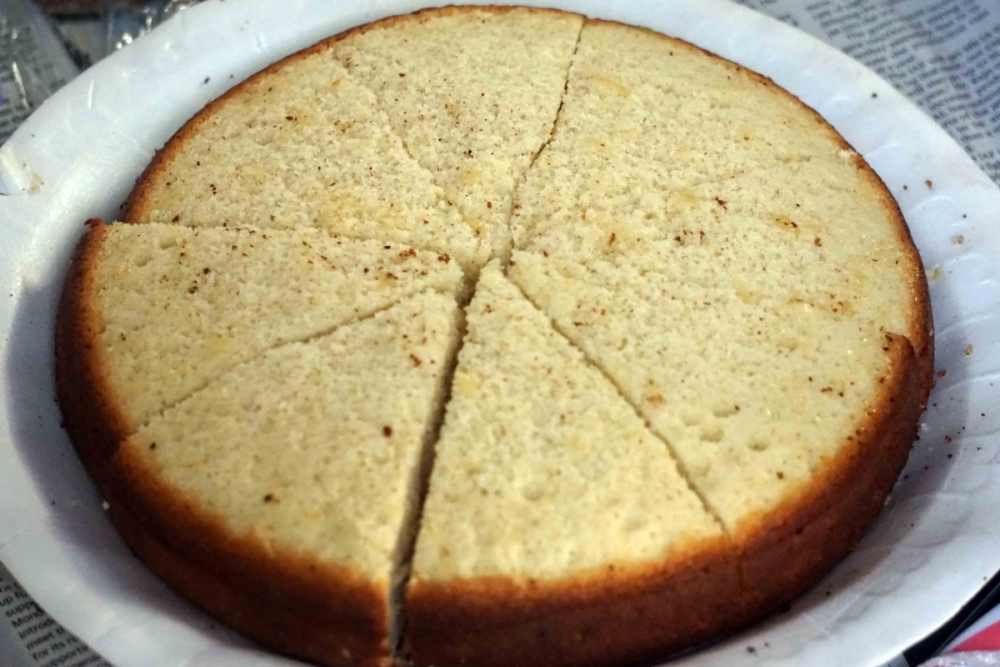
Squandering of food primarily occurs during weddings and celebrations that follow. This prodigality does not end with the wedding eve and wedding day. While the ‘catering’ centres arrange the food for the day of the wedding, the responsibility of organising feasts before the wedding falls on the women. Even in celebrations organised inside the homes, there are numerous items including biriyani, neychoru or ghee rice, three or four varieties of pathiri, porotta, vellappam, noolputt, aleesa, chicken curry, chicken fry, stuffed chicken, mutton stew, fish curry, meen (fish) mulakittath, salads and puddings. Some of the items for these celebrations are purchased from outside. Even so, the ‘handiwork’ of arranging everything is done by the women.
In the aforementioned localities, serving guests with food purchased from outside is considered disgraceful. With the primary purpose of entertaining guests, snacks are quickly prepared in the house to serve them.
While the cuisines of Kuttichira in Kozhikode district, as well as Kannur district and its vicinities, show great richness and variety—the food items in the two regions differ. Thalassery in Kannur district is a step ahead in terms of the number of items. Both these regions have unique food practices associated with each phase of life and celebration.
People in Thalassery and its vicinities, and in Kuttichira, follow certain practices associated with food. These practices start from the time of birth. During the seventh month of pregnancy; kalathappam is made by grinding the rice used for making neychoru, raw rice, and sugar together, and frying the mixture in oil. This is to be sent to the house of the husband of the pregnant woman. As an accompaniment to this dish, pandam (made with Bengal gram, coconut, sugar and powdered cardamom) is prepared.
For forty days after the delivery of the child, the mother takes bath with an oil massage, in water boiled with nalpamaram (a combination of four species of the ficus plant). The special food items given during this period for revitalising the body include fenugreek kanji, medicinal kanji and ulikkatta.
There is the custom of preparing and sending over an item called pallada when a child starts teething. In Kuttichira, double the amount of pallada that was sent from the girl’s (wife’s) home to the puthiappila’s house has to be sent back.
For a wedding in Kuttichira and Thalassery—aleesa, muttumala, biriyani and neychoru will at least be there. In the earlier days, in Thalassery, there used to be feasts for the bridegroom for forty days after the wedding. When the bridegroom came to stay over in the evenings, he would be accompanied by a group of friends (This custom was prevalent among the Muslims of northern Wayanad as well. However, feasting, in the company of friends, happened only once or twice. These feasts were known by the names randamvili, moonnamvili and so on). There would be new items on each of the forty days. The celebration ended with the serving of fish.
Breakfast dishes served in Thalassery for the bridegroom include aripathiri, gothamborotti, ariorotti, kinnaorotti, neypathiri, pancharapaata, and muttasurkka.[4]
Ramadan Cuisine
Ramadan is a time of fast, when one renounces food and drinks. Islam prescribes simplicity in breaking the fast. However, in recent years (in Kuttichira, Thalassery and Malabar in general), breaking the fast has come to be something akin to an eating competition. Organised as a community breaking of fast, the event is rich with food varieties. Each region of Malabar has its unique food items, associated with breaking of the fast. For example, among the Muslims of northern Wayanad, items like rice pathiri kunjipathil, otupathil (types of rice pancakes), kozhiyada (deep fried all purpose flour dumplings, filled with minced chicken), and kombanada have more importance.
In Kuttichira, breaking of the fast is a sumptuous affair. It happens in four stages—cheriyathura, valyathura, muthazham and athazham. For cheriyathura, the common items are the chatti pathiri, cutlet, muttamala, muttapathiri, muttasurkka and samosa, along with tea, snacks, fruits, dates and lemon juice. For valyathura, that happens a while later, one could include different varieties of pathiri, poori, noolputt, varied meat, chicken and fish preparations, grilled and fried items. Muthazham is just before bedtime. The main dish for muthazaham is cumin kanji. For athazham, early in the morning, there will be rice, curry, upperi (fritters), meat, fish and tea with milk.
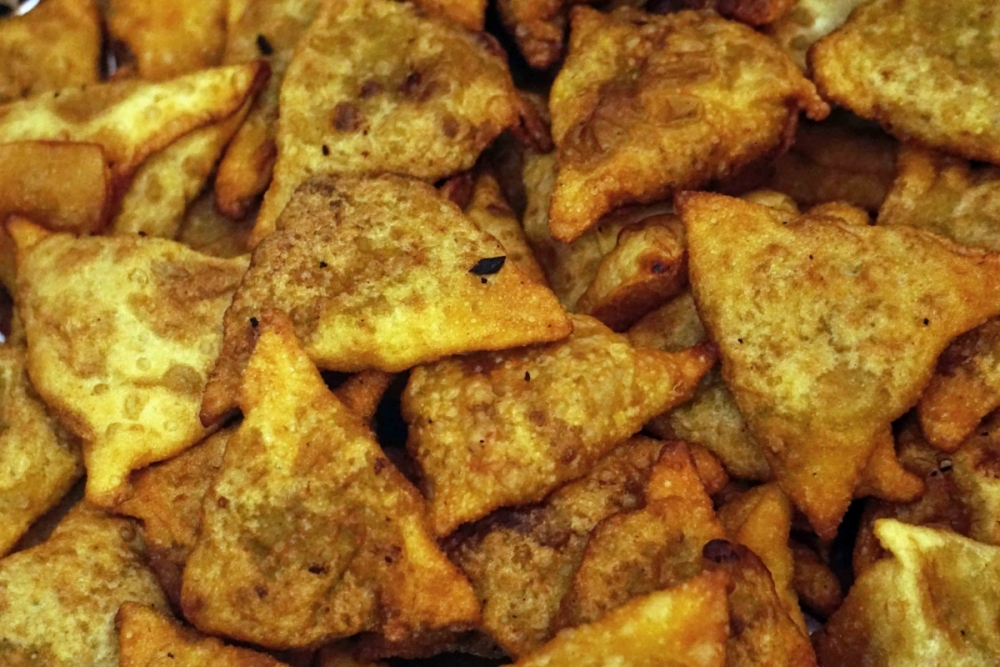
In Thalassery, one can find hundreds of items for the breaking of the fast. These include unnakkaya, irachipathiri, kozhiyada, kaivishari, nulliyittath, muttasurkka muttamala, pazham (banana) roast, pazham nirachath, nentra pazham vaatiyath and varieties of rotti (type of bread), such as arirotti, maaturotti, puzhukkalrotti and ithalrotti. An item that is very special is musaara. Made from the milk of wheat, this item is a step ahead when it comes to taste. Chicken nirachat is prepared by roasting a whole chicken stuffed with masala (a mixture of spices and other ingredients).
The famous Ramadan cuisine of Thalassery is rich in its variety of ingredients. Some of these are:
- Unnakkaya – made from a mixture of ground boiled banana, coconut, egg etc.
- Nulliyitath – made from rice flour and pieces of Mysore banana
- Vaariyittath – made from parboiled rice and banana
- Kaivishari – made of all-purpose flour and eggs
- Ithalrotti – made from light rice and coconut milk
- Nenthrapazhamvattiyath – thinly sliced bananas toasted in cow’s ghee
- Thengapathiri – made of cooked rice and coconut
- Irachipathiri – uses meat, wheat flour, refined flour, onions, coriander leaves and other ingredients
- Vattappam – made from raw rice, coconut, yeast, cumin, coconut milk, cashew nuts, sugar etc.
Kadukkanirachath – made of mussels, parboiled rice and scraped coconut. In the special tastes of Kannur and Thalassery, different mussel dishes also have a place. Another speciality of Thalassery is thinly sliced tapioca mixed with masala, and fried. This is called kozhikaal (lit: chicken drumsticks). However, it does not have any relation whatsoever with chicken drumsticks.
Kaypola, bread pola, turkipathal, kalanji, neriyarippola, tharippola, carrotpola, irachikkoth, chicken roll, irachippetti, meat cutlet, chicken vada, kizhiyappam, inthapazhampori, madhurappori, madhurappetti, omanappathiri, ullivada, parippuvada, egg pakkavada, aaloobonda, pakkavada, aaloobajiya, katrikabajiya, mulakbajiya and veg roll are also important items in Thalassery’s collection of dishes for breaking the fast. Many of these items have now become popular outside the borders of Thalassery. In community fast-breaking of the Malayalis in the Gulf countries, some of these items have started being served.
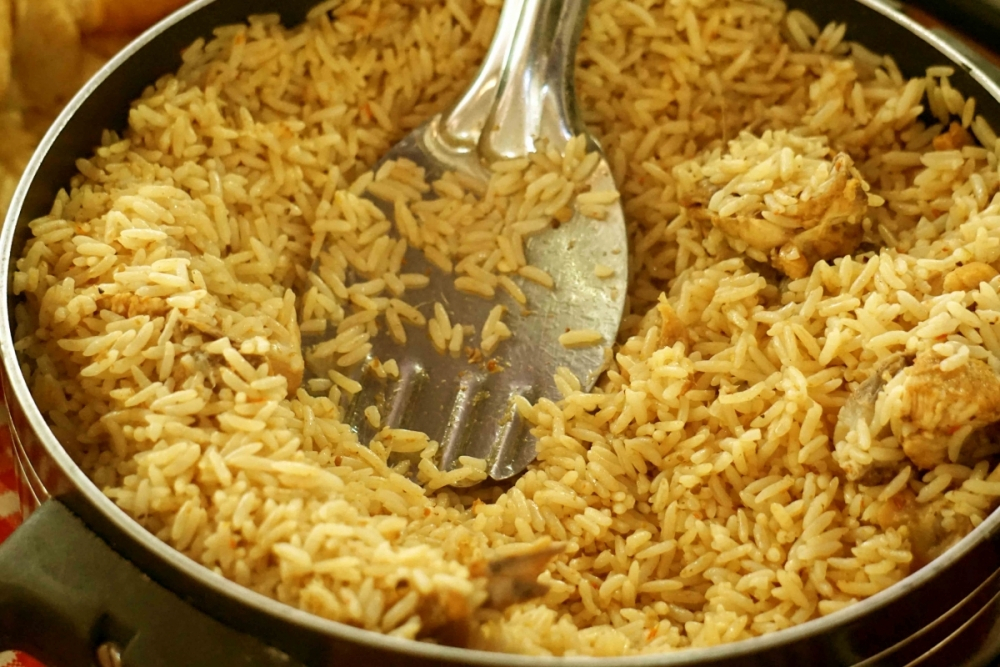
Many of the dishes that existed before, no longer exist. At the same time, under the influence of new media and migration, the kitchens of Malabar are enriched with new dishes. Most of the dishes that belonged, until recently, to the Arab region alone, are now available in the hotels in Malabar. Many of the road-side boards in Malabar, advertising food items, list Arab dishes. Of these, kuzhimanthi, a kind of biriyani, is a major item. In Malabar, it is not cooked in the same way as it is done in Arabia. It has been ‘Malabar-ised’ by adding the flavours and fragrances of the region. It is the locals who returned to Malabar after they lost jobs in Saudi Arabia following the Nitaqat (Saudisation), and started the many food places that sold Arabic dishes, such as kuzhimanthi and alfam in Malabar.
Other food items of Malabar
Malayali cuisine is constituted of rice and coconut. However, its character is derived from multiple regions. What is cooked and eaten by the local population will be connected to their origins. These are related to one’s identity by birth, occupation, religious beliefs, and one’s ancestral roots. The variations in food habits, tastes and ways of cooking that result from these factors, contribute towards a variegated storehouse of culinary styles.
There are a number of food items which can be considered typical of Malayalis, especially of Malabar. The roots of these lie in the culture, climate and geography of Malabar. Prominent among them are chor (boiled rice) and food items made of boiled rice, such as dosha, different types of appam, putt and idly. A number of curries (side dishes) made from a variety of vegetables are also popular in Kerala. Malayalis use a lot of spices in their meat recipes. Such ingredients are less prominent in the vegetarian food items and hence they suit the palate of foreigners too.
Puttu and Kadala
Puttu and kadala (Bengal gram) are favourite breakfast dishes not just in the Malabar but throughout Kerala. Puttu and curry made of Bengal gram is consumed for breakfast as much as dosha and idly. Puttu is one of the tastiest among steamed foods and in some parts of southern Malabar, it is also known by the name pitt.
Kadalakkari is a side dish with Bengal gram as its major ingredient. This is the main accompaniment for puttu. It is also a side dish for appam and chappathi.
Kappa and Fish curry
Kappa (tapioca) and fish curry occupies a prominent position in menus across households, and hotels throughout Kerala. Tapioca, that is mashed and boiled, along with hot and spicy fish curry is a favourite in southern Kerala, and not just in Malabar.
Kallummakkay Fry
Kallummakkay (mussels) is typical of Malabar. Even though these days it is available all over Kerala, the real taste of mussels can only be known in Malabar. Mussels, with added spices, and fried in coconut oil is a delectable dish.
Kozhukkatta
Kozhukkatta is typical of Malabar. The egg-shaped kozhukatta is made by covering a mixture of coconut and jaggery in rice flour dough, and steaming it. Kozhukatta can also be made non-sweet by putting only coconut inside it.
Pathiris
Aripathiri (rice pathiri) is another typical dish from Malabar. Grilled on a hot flat surface, this is now a favoured dish in fast food shops too. Pathiri has many varieties. There are about forty varieties of pathiris in Malabar[6], which include chatti pathiri, kunji pathiri, neypathiri, koyalumme pathiri, meen pathiri (meen fish), irachi pathiri (irachi: meat), aana pathiri, muttasurkka pathiri, thenga pathiri (thenga: coconut), masala pathiri, kinna pathiri, podi pathiri, vegetable pathiri, ithal pathiri, thakkali (tomato) masala pathiri, muringayila pathiri (muringayila: moringa leaves), konj (prawns) kinnapathiri, masalamutta pathiri, kai pathiri, steamed irachi pathiri, thengappal (coconut milk) pathiri, katti pathiri. All the pathiris mentioned above are made using rice flour.
Payasam
After many treats that are salty, spicy, sour or bitter, comes payasam, a dish that bestows sweetness in plenty. It is the exciting culmination and climax of a sadya (traditional feast served on a plantain leaf). This sweet dish is not just of Kerala. It is a traditional sweet in many south Asian countries. In these countries, similar dishes are popular. Payasam need not always be had as part of the lunch; it can be consumed by itself too. It is an important offering at temples. In north India, payasam is known by the name kheer. The origin of the name is from the Sanskrit work ksheeram, which denotes milk. The word payasam also has its origin in Sanskrit. It also means milk. Payasam is mostly made using milk, rice, ghee and sugar. Sometimes, jaggery replaces sugar. Apart from these, payasam can be made with different ingredients. The most common payasams in sadyas in Kerala are pal payasam, paladaprathaman, ada prathaman, semiya payasam, idichu pizhinja payasam and gothambu payasam.
The World of the Kitchen
While life in Malabar is changing, the matrilineal traditions of northern Malabar remain unaffected. The base of these is the Malayali household structure called tharavaad. Tharavaad represents a large family. Family business in Malabar includes making of urus (a type of large sea vessel), spice trade, trade in grains and timber. Until a few centuries ago, each tharavaad would have around 30 to 40 rooms, and around 200 members. After marriage, the woman would live there with her husband and children. She was not required to seek employment outside the home as a space to live, and economic security were assured to her. This helped her gain culinary expertise. Moreover, she had the means to employ helpers to do the hard labour in the kitchen. All these are factors that contributed to the exceptional growth of this culinary style. Cooking was an art that women practised. The knowledge got handed down from mother to daughter through word, sight and tutelage. Modern living means lesser number of members; smaller kitchens; and modern amenities such as the pressure cooker, mixer grinder, fridge, oven etc. Still, the affinity to older ways has not vanished totally.
Cuisine for Receptions
An inclination for entertaining guests is a characteristic trait of the Mappilas. Weddings are major occasions for celebration. In Malabar, marriages are fixed in advance between families. The wedding celebrations and receptions that start days before the wedding day, go on for weeks after. On this occasion, the traditional dishes are presented at their best. In these receptions, Mappilas follow the practice of eating in a group. Around 10 people sit on a round mat made of palm leaves called supra, and eat from a big common plate. It is difficult to determine when the main course starts. Numerous dishes are served before that. At a certain point, an array of breads is served. These include pathiri, wheat porotta, and appam with soft lace-like borders, served along with meat and chicken dishes. With biriyani served after that, there will be accompaniments, such as dates pickle, chammanti (made of ground coconut), and raita with curd (called sallaas).
After the marriage, the bridegroom stays at his bride’s place. In the new home he would be called puthiyappila (new young groom) for his entire life.
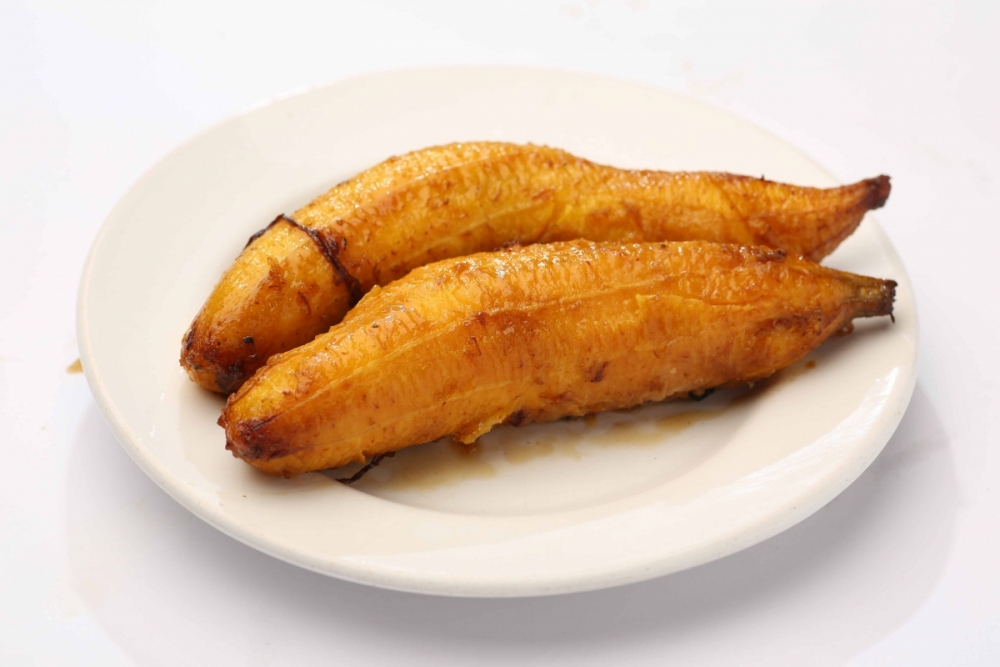
His first breakfast is a major event. The preparations for it start as soon as he wakes up, by serving him banana sweetened according to customs, and half of a boiled egg. A sumptuous meal follows. This meal includes brain masala, fried liver, spicy prawns, mutton and chicken curries, along with the famous flat breads of Malabar. The snacks served along with the meal are also memorable. He is served dishes of this nature for 40 days. Some families ensure that the puthiyappilas are served the best, by keeping women who are skilled cooks in the house, during this period.
The Music of Flavours
The Malabar style of cuisine is an amalgamation of two different styles. The plentiful use of coconut comes from the native culture but the use of ghee definitely must have come from the Arab influence. Some say that it was used by the Arabic nomads called Bedouins and they call it saman. The affinity that the Mappilas have towards special ways of cooking mutton—for instance, the head of the goat served in wedding feasts, exhibits Arab culture. The same can be said about the style of cooking. Many of the stuffed food items of the central and eastern countries are prepared with an aim to astonish the people who eat it. There is one particular Mappila dish where, boiled egg is stuffed into a whole chicken, and the same is covered in a bed of dough. In the sweet dish chattipathiri from Malabar, one can see the method of using stuffed layers—like the Turkish dish Baklava, and Yemeni dish Bintal-Sahn. Thus, if one examines Malabar cuisine, one will encounter kitchens and cultures from across the ocean.
The way we eat reflects our lifestyle too. Mappila cuisine is one of the best examples for this. Its unique style is determined by a celebratory attitude towards food. The Quran calls it the gift of God for humankind. In Malabar, fasts and feasts are taken very seriously.[7] Food is considered to be one of the main pleasures in life, and is meant to be shared.
Endnotes
[1]Bharathannoor, ‘Ruchibhedangaludeyum Vishaharangaludeyum Mantrikavilikal,’
[2]Varrier, ‘Nalukoottavum Inchithairum’, 65
[3]Mohammed, Keralathile Muslim Streekalude Varthamanakala, 30.
[4]Ibid., 31.
[5]Matrubhumi Daily, ‘Appangalembadum.’
[6]In the book, Athishayapathiri by Nysa Ayesha, the recipes of 40 varieties of pathiri are given
[7]Moosa, Malabar Pachakam, 33
Bibliography
Bharathannoor, Shameer. ‘Ruchibhedangaludeyum Vishaharangaludeyum Mantrikavilikal’. In Madhyamam Weekly, Annual Issue, 2006.
Varrier, T.V. Achyuta. ‘Nalukoottavum Inchithairum.’ In Naatubhakshanam, edited by M.A. Leena. Kottayam: D.C. Books, 2004.
Mohammed, N.P. Hafiz. Keralathile Muslim Streekalude Varthamanakala. Kozhikode: Olive Publications, 2013.
Mathrubhumi Daily. ‘Appangalembadum.’ Mathrubhumi Daily, Kozhikode, December 20, 2016.
Ayesha, Nysa. Athishayapathiri. Calicut: Niyatham books, 2014.
Moosa, Hayisa. Malabar Pachakam. Kottayam: D.C. Books, 2010.
